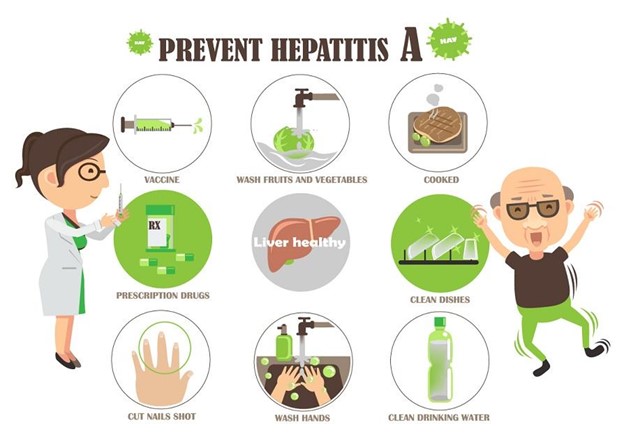A nurse is contributing to a teaching plan about the prevention of hepatitis A. The nurse should include which of the following activities can spread hepatitis A?
Sharing personal hygiene items like razors
Unprotected sexual activity
Eating uncooked foods
Getting a tattoo
The Correct Answer is C
Choice A Reason: Sharing personal hygiene items like razors is not a common way of spreading hepatitis A, but it may transmit hepatitis B or C, which are blood-borne infections.
Choice B Reason: Unprotected sexual activity is not a common way of spreading hepatitis A, but it may transmit hepatitis B or C, or other sexually transmitted infections.
Choice C Reason: Eating uncooked foods is a common way of spreading hepatitis A, as the virus can contaminate food or water that has been exposed to fecal matter from an infected person.
Choice D Reason: Getting a tattoo is not a common way of spreading hepatitis A, but it may transmit hepatitis B or C, or other blood-borne infections, if the equipment is not properly sterilized.

Nursing Test Bank
Naxlex Comprehensive Predictor Exams
Related Questions
Correct Answer is D
Explanation
Choice A Reason: High glucose level is not a finding that confirms bacterial meningitis, but it may indicate other conditions such as diabetes mellitus or hyperglycemia.
Choice B Reason: Low protein concentration is not a finding that confirms bacterial meningitis, but it may indicate other conditions such as malnutrition or liver disease.
Choice C Reason: Decreased CSF pressure is not a finding that confirms bacterial meningitis, but it may indicate other conditions such as dehydration or spinal cord injury.
Choice D Reason: Cloudy CSF is a finding that confirms bacterial meningitis, as it indicates that there is an infection and inflammation in the meninges that surround the brain and spinal cord.
Correct Answer is A
Explanation
Choice A Reason: Following a high-fiber diet to establish bowel regularity is an appropriate instruction for a client who has hemorrhoids, as it helps to soften stools and reduce straining and pressure on hemorrhoids.
Choice B Reason: Using a stimulant laxative to prevent constipation is not an appropriate instruction for a client who has hemorrhoids, as it may cause diarrhea, dehydration, or electrolyte imbalance.
Choice C Reason: Cleaning the anal area after bowel movements with alcohol-based wipes is not an appropriate instruction for a client who has hemorrhoids, as it may irritate, dry, or damage hemorrhoidal tissue.
Choice D Reason: Limiting the intake of fruit to prevent loose stools is not an appropriate instruction for a client who has hemorrhoids, as fruit is a good source of fiber and fluid that can help prevent constipation and hemorrhoids.
Whether you are a student looking to ace your exams or a practicing nurse seeking to enhance your expertise , our nursing education contents will empower you with the confidence and competence to make a difference in the lives of patients and become a respected leader in the healthcare field.
Visit Naxlex, invest in your future and unlock endless possibilities with our unparalleled nursing education contents today
Report Wrong Answer on the Current Question
Do you disagree with the answer? If yes, what is your expected answer? Explain.
Kindly be descriptive with the issue you are facing.
